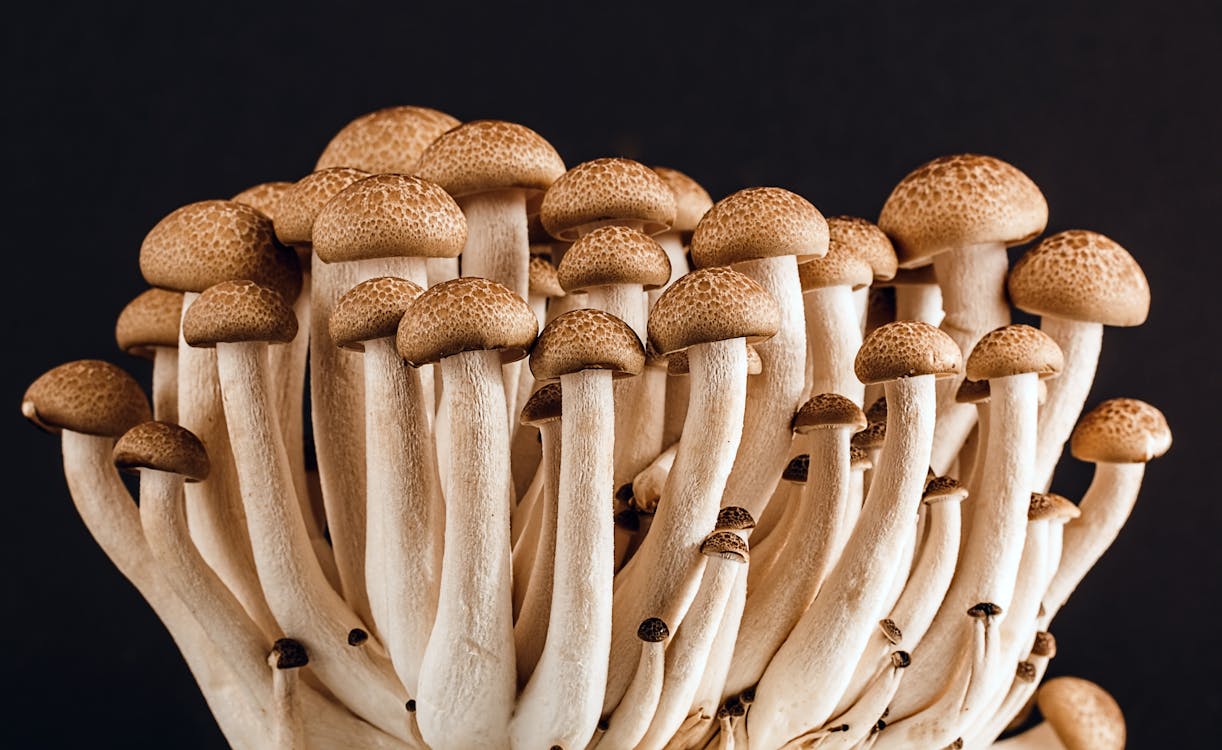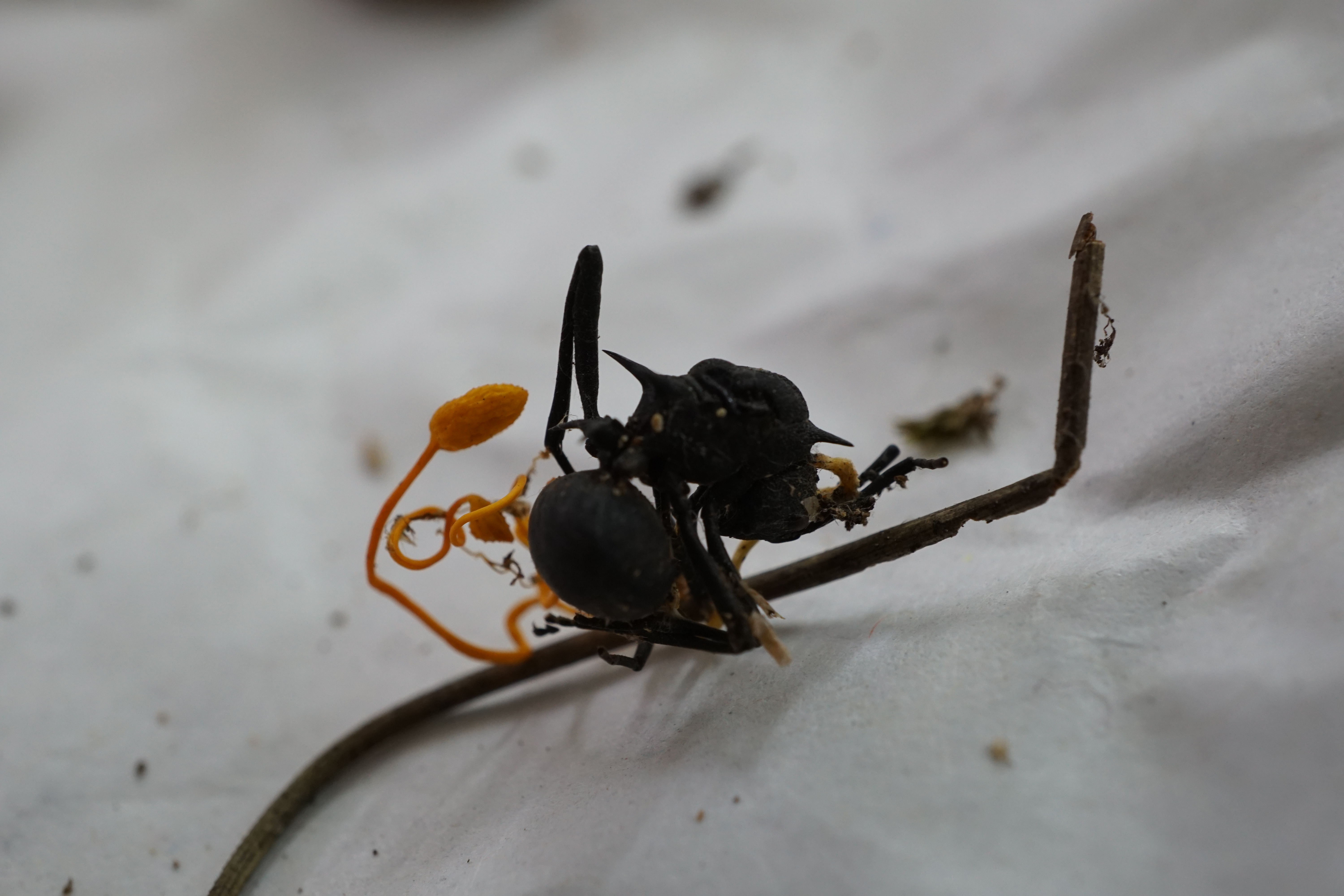By Nicole Gadda
If you’re anything like me, you’re impatiently waiting for the next season of the hit HBO show The Last of Us, where humans are struggling to survive after an outbreak of fungal infections plagues the globe. In the universe of The Last of Us, humans infected with the fungus demonstrate zombie-like behavior. The fungus hijacks the mind and body of their host in order to spread the infection to other humans through skin-to-skin contact (aka, zombie bites).
Don’t worry – The Last of Us takes some creative liberties. There is certainly no fungus that can turn humans into zombies. Plenty of fungi can infect insects, plants, and even humans without causing any “zombie-like” behavior. For example, downy mildew is a fungus that can attack grapes, which causes rot. Similarly, athlete’s foot is a fungal disease that affects people’s feet. The fungus that causes athlete’s foot can’t control minds, although it is pretty itchy. But did you know that the creators of The Last of Us based their storyline on a very real biological phenomenon? Ophiocordyceps unilateralis, otherwise known as cordyceps or zombie-ant fungus, is a fungus that infects insects like ants and spiders. You’re probably wondering, “Okay, but where does the zombie part come in?”
Here’s how it works: Fungi like cordyceps produce spores, which are cells involved in reproduction. Spores are somewhat similar to plant seeds, except spores can survive temperatures and environments that typically would kill a growing plant or fungus. When a spore senses that the environment around them is hospitable for growth, it can germinate into an actively growing fungus again.

Cordyceps spores are dispersed along the jungle floor where an unsuspecting ant may step on them. The spores attach to the ant’s body and germinate into vegetative (living) cells. Inside the ant, the fungus begins to multiply, spreading long tendrils that grow throughout the ant’s body. The fungus feeds on the ant from the inside out while the ant goes on doing its ant business, like foraging for food and building nests. The fungus continues to grow inside the ant until it makes up nearly half the ant’s mass! Eventually, the fungus sends chemical signals to the ant’s brain, forcing it to seek height by climbing a nearby plant, where warmth and sunlight are abundant. Once the ant is high enough, it bites down on a leaf and the fungus pushes sticky threads from inside out that glues the ant’s body in place. Then, in conditions ripe for fungal reproduction, a giant fungal stalk bursts from the ant’s head, showering the area with more spores to infect other nearby insects. If you’re dying (no pun intended) to see this in action, you can watch it live with narration by David Attenborough of BBC’s Planet Earth here.

Scientists aren’t quite sure how exactly cordyceps controls ants, but they have a few ideas. One theory is that the fungal mycelia, which is a network of growing fungal threads, can infiltrate muscle fibers and possibly the brain itself, which impacts the ant’s physical movements. Another hypothesis is that the fungus releases small molecules that chemically alter the ant’s brain, which ultimately manipulates the ant’s actions.
Can cordyceps ever evolve to infect humans, like in The Last of Us? Scientists say it’s unlikely due to years of coevolution between the fungus and the species of ants it infects. Coevolution is the process of two species reciprocally affecting one another’s evolution. Cordyceps has developed a parasitic relationship with the species of ants it infects due to millions of years of coevolution, which makes it the perfect parasite to hijack the ant immune system. Because humans and ants are biologically distinct, the chances of a fungus that is primed against ants to jump to humans is incredibly unlikely. Similarly, most fungal species can’t exist above the human body temperature at 98.6 degrees Fahrenheit.
Okay, great–we don’t have to worry about human zombies anytime soon. Pathogenic fungi capable of infecting humans are usually pretty mild. Common fungal pathogens like Candida (yeast infections) and Aspergillus (respiratory infections) can cause illness that is relatively treatable with antifungal treatment. The symptoms are typically mild (compared to turning into a zombie, at least!), but can be more dangerous for immunocompromised individuals. However, researchers have found that warmer temperatures due to climate change may drive fungal pathogens to be more dangerous to our health. One such fungus is Candida auris, which was discovered in 2009 and thrives in higher temperatures. Shockingly, this fungus evolved separately on multiple continents, making researchers believe its evolution was fueled by rising global temperatures. Candida auris is a particular threat because it can spread person-to-person and cause severe infections if it gets into the bloodstream. It’s also resistant to many available fungal treatments, which highlights the need for new antifungal therapies. While we might not have to worry about turning into zombies, fungal diseases are on the rise. Move over, Sars-CoV-2, the next big outbreak may be fungal.
